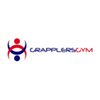 The groin, described as the junction between the lower limbs and torso, is vulnerable to a lot of different injuries.
The groin, described as the junction between the lower limbs and torso, is vulnerable to a lot of different injuries.
Hernias, stress fractures, and avulsion fractures are all common injuries that affect the groin, but for this issue we'll be focusing on one of the most common groin injuries; groin pull or groin strain.
In this issue I'm going to take a slightly different approach to the way I usually write these articles.
Firstly, I'm going to talk briefly about what a groin pull is, what causes a groin pull and what to do to prevent a groin pull.
Then I'm going to reproduce a detailed management plan for the correct treatment and complete rehabilitation of a groin strain.
This detailed management plan comes from one of my old university text books, called "Modern Principles of Athletic Training" by Daniel D. Arnheim.
It's one of those 900 page door-stoppers, but it's the book I refer to most for information on sports injury prevention and rehabilitation. It's extremely detailed and a valuable resource for anyone who works in the health and fitness industry. So ...
| RELATED ARTICLE | ||
|

What Is A Groin Pull?
Depending on the severity, a groin pull can range from a slight stretching, to a complete rupture of the muscles that attach the pubic (pelvis) bone to the thigh (femur) bone.
A groin pull or strain specifically affects the "Adductor" muscles. (Adductor; meaning, moves part closer to the midline or middle of the body) These muscles are located on the inside of the thigh, and help to bring the legs together.
The adductor muscles consist of the "Adductor Brevis", "Adductor Magnus", and "Adductor Longus".
Of these three, the Adductor Longus is most susceptible to injury, and the most common place of injury on Adductor Longus is the point at which the muscle and tendon attach to the femur (thigh) bone.

What Causes A Groin Pull?
Competitors that participate in sports that require a lot of running or rapid change in direction are most susceptible to groin injuries. Other activities like kicking, jumping and rapid acceleration or deceleration also place a lot of strain on the groin muscles.
Another activity that puts a lot of strain on the groin is any movement that results in a sudden pressure being applied. Such as a fall, landing awkwardly, twisting, or bending while stress is applied to the groin muscles.

How To Prevent A Groin Pull?
The basis of prevention comes down to two simple factors. A thorough warm-up and physical conditioning, i.e.: flexibility & strength. First, a thorough and correct warm-up will help to prepare the muscles and tendons for any activity to come.
| RELATED ARTICLE | ||
|
Secondly, flexible muscles and tendons are extremely important in the prevention of most strain or sprain injuries. When muscles and tendons are tight and stiff, it is easy for those muscles and tendons to be pushed beyond their natural range of movement, which can cause strains, sprains and pulled muscles.
To keep your muscles and tendons flexible and supple, it is important to undertake a structured stretching routine.
For a comprehensive reference of over 100 clear photographs of every possible sports related stretch, get a copy of "The Stretching Handbook". If you're interested in stretches for the groin, "The Stretching Handbook" has over 7 different stretches you can do.
And third, strengthening and conditioning the muscles of the groin will also help to prevent groin strain. There are a number of specific strengthening exercises you can do for these muscles, like cable adductions and machine adductions.

A Complete Treatment and Management Plan For Groin Strain
The following is a thorough and detailed management plan for the full recovery and rehabilitation of a groin strain. As mentioned earlier, it's taken directly from "Modern Principles of Athletic Training" by Daniel D. Arnheim.
Considering this management plan was written over ten years ago, my only addition would be the reduction of ice therapy and the addition of massage and heat therapy during the 2nd, 3rd and 4th phase. Regardless of my suggestions, the following will be extremely useful for anyone who is, or has suffered from a groin strain.
 Injury Situation:
Injury Situation:
-
A women varsity basketball player had a history of tightness in her groin. During a game she suddenly rotated her trunk while also stretching to the right side.
There was a sudden sharp pain and a sense of "giving way" in the left side of the groin that caused the athlete to immediately stop play and limp to the sidelines.
 Symptoms & Signs:
Symptoms & Signs:
-
As the athlete described it to the athletic trainer, there was severe pain when rotating her trunk to the right and flexing her left hip. Inspection revealed the following:
- There was major point tenderness in the groin, especially in the region of the adductor magnus muscle.
- There was no pain during passive movement of the hip, but severe pain did occur during both active and resistive motion.
- When the groin and hip were tested for injury, the hip joint, iliopsoas and rectus femoris muscles were ruled out as having been injured; however, when the athlete adducted the hip from a stretch position, it caused extreme discomfort.
 Management Plan:
Management Plan:
-
Based on the athletic trainer's inspection, with findings confirmed by the physician, it was determined that the athlete sustained a second-degree strain of the groin, particularly to the adductor magnus muscle.
| Phase 1: | ||||||
|
| Phase 2: | ||||||
|
| Phase 3: | ||||||
|
| Phase 4: | ||||||
|
| Phase 5: | ||||
|

Criteria For Returning To Competitive Basketball:

- As measured by an isokinetic dynamometer, the athlete's injured hip should have equal strength to that of the uninjured hip.
- Hip has full range of motion.
- The athlete is able to run figure-8s around obstacles set 5 feet apart at full speed.


